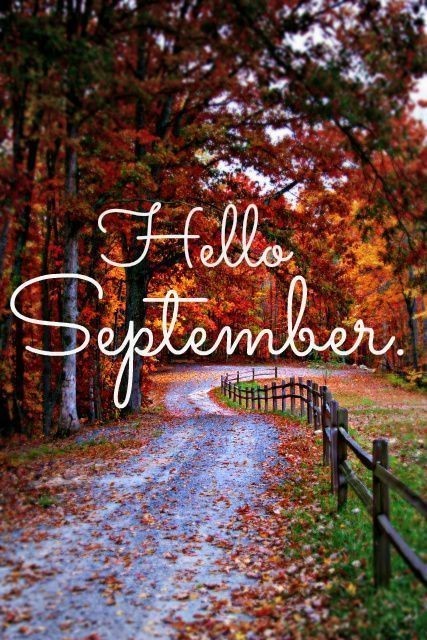By jayeffex

By jayeffex
More Posts from Monstrous-mind and Others
🍁🍂🎃🍂🍁🌬🍃🐈🌄

Hello September. May you the first of so many good things to come as the unofficial start to autumn 🍂

🎃 kitty and her pumpkin coven 🎃
🐈🍁🍂🐾

🔭🌃🌌

Kepler-186f is the first Earth-sized planet ever found that also orbits in its star’s habitable zone. Although its size and orbit are known, its mass and composition are not - however, existing models suggest that it could have a rocky terrain and an atmosphere, making it potentially the most Earth-like planet discovered so far.
🍂🍁🏔️🌨️🌌

Mark Basarab
🌌🏞️🏔️🍂🍁


mikkolagerstedt
🔭🌌☄️🪐

The Running Chicken Nebula comprises several clouds, all of which we can see in this vast image from the VLT Survey Telescope (VST), hosted at ESO’s Paranal site. This 1.5-billion pixel image spans an area in the sky of about 25 full Moons. The clouds shown in wispy pink plumes are full of gas and dust, illuminated by the young and hot stars within them.
Credit: ESO




Ginger Snaps Directed by John Fawcett (2000)
What’s Up For September 2018?
Outstanding views Venus, Jupiter, Saturn and Mars with the naked eye!

You’ll have to look quickly after sunset to catch Venus. And through binoculars or a telescope, you’ll see Venus’s phase change dramatically during September - from nearly half phase to a larger thinner crescent!

Jupiter, Saturn and Mars continue their brilliant appearances this month. Look southwest after sunset.

Use the summer constellations help you trace the Milky Way.

Sagittarius: where stars and some brighter clumps appear as steam from the teapot.

Aquila: where the Eagle’s bright Star Altair, combined with Cygnus’s Deneb, and Lyra’s Vega mark the Summer Triangle.

Cassiopeia, the familiar “w”- shaped constellation completes the constellation trail through the Summer Milky Way. Binoculars will reveal double stars, clusters and nebulae.

Between September 12th and the 20th, watch the Moon pass from near Venus, above Jupiter, to the left of Saturn and finally above Mars!

Both Neptune and brighter Uranus can be spotted with some help from a telescope this month.

Look at about 1:00 a.m. local time or later in the southeastern sky. You can find Mercury just above Earth’s eastern horizon shortly before sunrise. Use the Moon as your guide on September 7 and 8th.

And although there are no major meteor showers in September, cometary dust appears in another late summer sight, the morning Zodiacal light. Try looking for it in the east on moonless mornings very close to sunrise. To learn more about the Zodiacal light, watch “What’s Up” from March 2018.

Watch the full What’s Up for September Video:
There are so many sights to see in the sky. To stay informed, subscribe to our What’s Up video series on Facebook.
Make sure to follow us on Tumblr for your regular dose of space: http://nasa.tumblr.com
🐈🐅

-
 annauaaey liked this · 6 months ago
annauaaey liked this · 6 months ago -
 bellatrixlestrange6661 reblogged this · 7 months ago
bellatrixlestrange6661 reblogged this · 7 months ago -
 manicpixievideovixen liked this · 8 months ago
manicpixievideovixen liked this · 8 months ago -
 bellatrixlestrange6661 reblogged this · 8 months ago
bellatrixlestrange6661 reblogged this · 8 months ago -
 rosethornblood reblogged this · 8 months ago
rosethornblood reblogged this · 8 months ago -
 rosethornblood liked this · 8 months ago
rosethornblood liked this · 8 months ago -
 chin-axe reblogged this · 8 months ago
chin-axe reblogged this · 8 months ago -
 chin-axe liked this · 8 months ago
chin-axe liked this · 8 months ago -
 ein-der-traum reblogged this · 10 months ago
ein-der-traum reblogged this · 10 months ago -
 nocaute liked this · 11 months ago
nocaute liked this · 11 months ago -
 purplecrownnut liked this · 11 months ago
purplecrownnut liked this · 11 months ago -
 orbitadejupiter reblogged this · 11 months ago
orbitadejupiter reblogged this · 11 months ago -
 autumnalequinoxharvest reblogged this · 1 year ago
autumnalequinoxharvest reblogged this · 1 year ago -
 luna-shieldmaiden reblogged this · 1 year ago
luna-shieldmaiden reblogged this · 1 year ago -
 twalter059 liked this · 1 year ago
twalter059 liked this · 1 year ago -
 elvinmarak97 liked this · 1 year ago
elvinmarak97 liked this · 1 year ago -
 sba040861 liked this · 1 year ago
sba040861 liked this · 1 year ago -
 specksofhope reblogged this · 1 year ago
specksofhope reblogged this · 1 year ago -
 acklestism liked this · 1 year ago
acklestism liked this · 1 year ago -
 lavendershazy reblogged this · 1 year ago
lavendershazy reblogged this · 1 year ago -
 thebelleeffect reblogged this · 1 year ago
thebelleeffect reblogged this · 1 year ago -
 dancing-mylife-away liked this · 1 year ago
dancing-mylife-away liked this · 1 year ago -
 hallowickit reblogged this · 1 year ago
hallowickit reblogged this · 1 year ago -
 blondeblair reblogged this · 1 year ago
blondeblair reblogged this · 1 year ago -
 unintentionallycomplic8ed reblogged this · 1 year ago
unintentionallycomplic8ed reblogged this · 1 year ago -
 unintentionallycomplic8ed liked this · 1 year ago
unintentionallycomplic8ed liked this · 1 year ago -
 elouiseattheplaza reblogged this · 1 year ago
elouiseattheplaza reblogged this · 1 year ago -
 estrellah reblogged this · 1 year ago
estrellah reblogged this · 1 year ago -
 paneleamygdala reblogged this · 1 year ago
paneleamygdala reblogged this · 1 year ago -
 berryhedgehog liked this · 1 year ago
berryhedgehog liked this · 1 year ago -
 lijanaa liked this · 1 year ago
lijanaa liked this · 1 year ago -
 moipreciousdeerdoe reblogged this · 1 year ago
moipreciousdeerdoe reblogged this · 1 year ago -
 unwrappingthemystery liked this · 1 year ago
unwrappingthemystery liked this · 1 year ago -
 atermonocl reblogged this · 1 year ago
atermonocl reblogged this · 1 year ago -
 the-sun-will-rise-again-25 reblogged this · 1 year ago
the-sun-will-rise-again-25 reblogged this · 1 year ago -
 the-sun-will-rise-again-25 liked this · 1 year ago
the-sun-will-rise-again-25 liked this · 1 year ago -
 justsaytacos89 liked this · 1 year ago
justsaytacos89 liked this · 1 year ago -
 octopusonparade reblogged this · 1 year ago
octopusonparade reblogged this · 1 year ago -
 dadbodplus50somethin8 reblogged this · 1 year ago
dadbodplus50somethin8 reblogged this · 1 year ago -
 xokristennichole reblogged this · 1 year ago
xokristennichole reblogged this · 1 year ago -
 cherry-posts liked this · 1 year ago
cherry-posts liked this · 1 year ago -
 doe-eyedwerewolf reblogged this · 1 year ago
doe-eyedwerewolf reblogged this · 1 year ago -
 cromwellwitch reblogged this · 1 year ago
cromwellwitch reblogged this · 1 year ago -
 fauyen reblogged this · 1 year ago
fauyen reblogged this · 1 year ago
My ambition is handicapped by laziness. -C. Bukowski Me gustan las personas desesperadas con mentes rotas y destinos rotos. Están llenos de sorpresas y explosiones. -C. Bukowski. I love cats. Born in the early 80's, raised in the 90's. I like Nature, Autumn, books, landscapes, cold days, cloudy Windy days, space, Science, Paleontology, Biology, Astronomy, History, Social Sciences, Drawing, spending the night watching at the stars, Rick & Morty. I'm a lazy ass.
222 posts